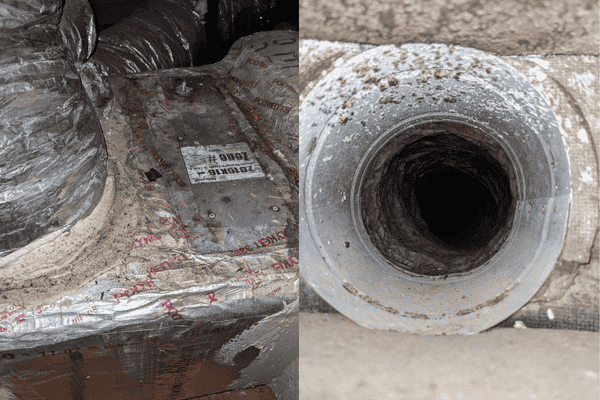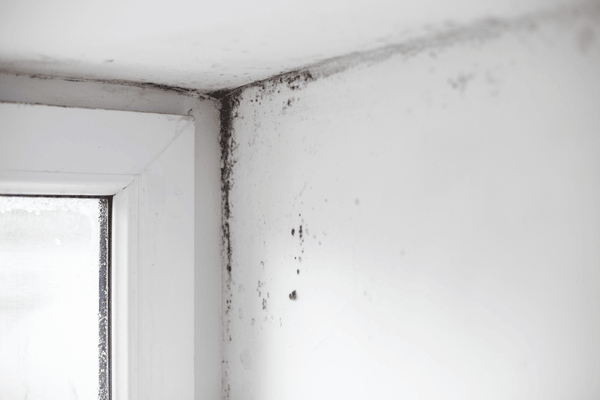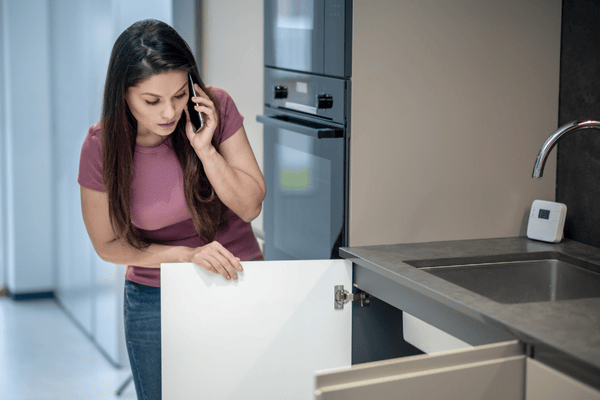Is Your Home Hiding a Mould Problem?
If you’re waiting until you see mould to take action, you’re already too late. The worst mould problems aren’t the ones out in the open—they’re the ones growing in the dark, damp corners of your home.
If you want to find hidden mould, check areas with moisture from leaks, condensation, and humidity. It spreads silently, releasing airborne spores that can trigger allergies, asthma, and respiratory issues. Even worse, over time, mould can weaken walls, flooring, and insulation, leading to costly structural damage.
The problem? Most homeowners don’t realize they have a mould issue until it’s well established. By the time it becomes visible, the infestation has likely spread behind walls, under carpets, inside furniture, or even through your HVAC system.
But you don’t have to wait for the damage to show itself. By knowing where to find hidden mould, you can catch it early, protect your home, and avoid costly repairs. Below, we’ll reveal the 10 most common places mould lurks—and what you can do about it.
1. Behind Walls and Wallpaper
Water leaks, high humidity, or condensation inside walls create a perfect environment for mould issues. Because mould grows behind the surface, you may not see it until serious damage occurs.
Warning Signs:
- Peeling, bubbling, or discolored wallpaper
- Persistent musty odours
- Unexplained allergies or respiratory issues
How to Check & Prevent It:
- Inspect walls near plumbing, windows, and exterior-facing walls.
- Look for soft spots or staining on drywall.
- If you suspect hidden mould, don’t cut into the wall—disturbing it can release spores into the air. Call a professional for proper assessment.
2. Underneath Carpets and Rugs
A damp carpet is a mould magnet. Whether from spills, pet accidents, or basement humidity, moisture trapped under rugs or carpets can lead to fast-growing mould colonies.
Warning Signs:
- Unexplained musty smells in a room
- Discoloration or dark patches on carpets
- Allergy symptoms that worsen when indoors
How to Check & Prevent It:
- Lift carpet edges and inspect the padding underneath.
- Use a dehumidifier in rooms with high humidity.
- If you discover mould under carpeting, replacement may be necessary, as spores can deeply embed into fibers.
3. Inside Air Conditioning Units and Ducts
Your HVAC system circulates air through your home—but if mould is growing inside your air ducts, it’s spreading spores into every room.

Warning Signs:
- Musty odours when the AC or heater is on
- Increased allergy symptoms
- Visible black or green residue around air vents
How to Check & Prevent It:
- Replace air filters regularly.
- Schedule professional duct cleaning at least once a year.
- Use a UV air purifier to kill airborne mould spores.
4. Under the Kitchen Sink
A small leak under your sink might seem harmless, but even slow drips create enough moisture for mould to thrive.
Warning Signs:
- Water stains or bubbling wood in cabinets
- Soft or crumbling baseboards
- Musty smells inside the cabinet
How to Check & Prevent It:
- Regularly inspect pipes for leaks.
- Store cleaning supplies in open containers to allow airflow.
- If you spot mould, remove affected materials and replace them if necessary.
5. Behind Appliances
Refrigerators, washing machines, and dishwashers generate heat and moisture, making the space behind them an ideal mould growth spot.
Warning Signs:
- Pooled water behind appliances
- Unusual smells near the base of your fridge or washer
- Warped flooring or cabinets
How to Check & Prevent It:
- Pull appliances away from the wall every few months to check for leaks or dampness.
- Clean behind and beneath large appliances regularly.
6. Inside Closets and Wardrobes
Closets and wardrobes may seem dry, but poor ventilation can cause humidity to build up, allowing mould to grow on clothing, shoes, and storage boxes.
Warning Signs:
- A musty smell when opening the closet
- White or greenish spots on fabric
- Leather shoes or bags feeling sticky
How to Check & Prevent It:
- Use silica gel packs to absorb moisture.
- Keep closets organized and avoid overcrowding.
- Air out clothing regularly, especially in humid months.
7. Around Windows and Window Sills

Condensation collects around windows, allowing mould to grow on sills, frames, and curtains.
Warning Signs:
- Black or green streaks on window sills
- Condensation on glass even in mild temperatures
- Paint peeling around window frames
How to Check & Prevent It:
- Wipe condensation daily.
- Install weather stripping to reduce drafts.
- Keep blinds or curtains open to improve airflow.
8. Attics and Crawl Spaces
Because attics and crawl spaces are rarely inspected, they can become mould-infested before homeowners even realize there’s a problem.

Warning Signs:
- Dark stains on rafters or insulation
- Musty odours when entering the attic
- Soft, damp, or rotting wood
How to Check & Prevent It:
- Install proper ventilation and moisture barriers.
- Regularly check for roof leaks or poor insulation.
- If you suspect widespread mould, call a professional.
9. Bathroom Ceilings and Tile Grout
Bathrooms are naturally humid, making them prime locations for mould growth on ceilings, tile grout, and shower seals.
Warning Signs:
- Black or pinkish spots in tile grout
- Water stains or peeling paint on the ceiling
- A persistent musty smell
How to Check & Prevent It:
- Run an exhaust fan during and after showers.
- Wipe down tile and shower areas weekly.
- Use mould-resistant paint for ceilings and walls.
10. Inside Mattresses and Upholstered Furniture
Moisture from sweat, spills, and humidity can cause mould to develop inside mattresses and couches, leading to serious health risks.
Warning Signs:
- A musty odour from the mattress
- Dark spots or streaks on upholstery
- Worsening allergies after sleeping or sitting on affected furniture
How to Check & Prevent It:
- Use a moisture-resistant mattress cover.
- Keep furniture away from walls to allow air circulation.
- Sun-dry mattresses and cushions periodically.
Find Hidden Mould & Take Action Before Damage Spreads
Hidden mould isn’t just a nuisance—it’s a health risk and a serious danger to your home. By regularly checking these common areas, you can catch mould early and prevent costly damage.
If you suspect hidden mould or recurring issues, don’t wait until it gets worse. Rawk J Services is here to help. As Red Deer’s trusted, family-owned mould removal specialists, we provide professional inspections, safe remediation, and long-term prevention solutions.
Book a mould inspection today and take the first step toward a healthier, mould-free home!
Call Rawk J Services now (403) 396-7207 or request a free consultation online.

